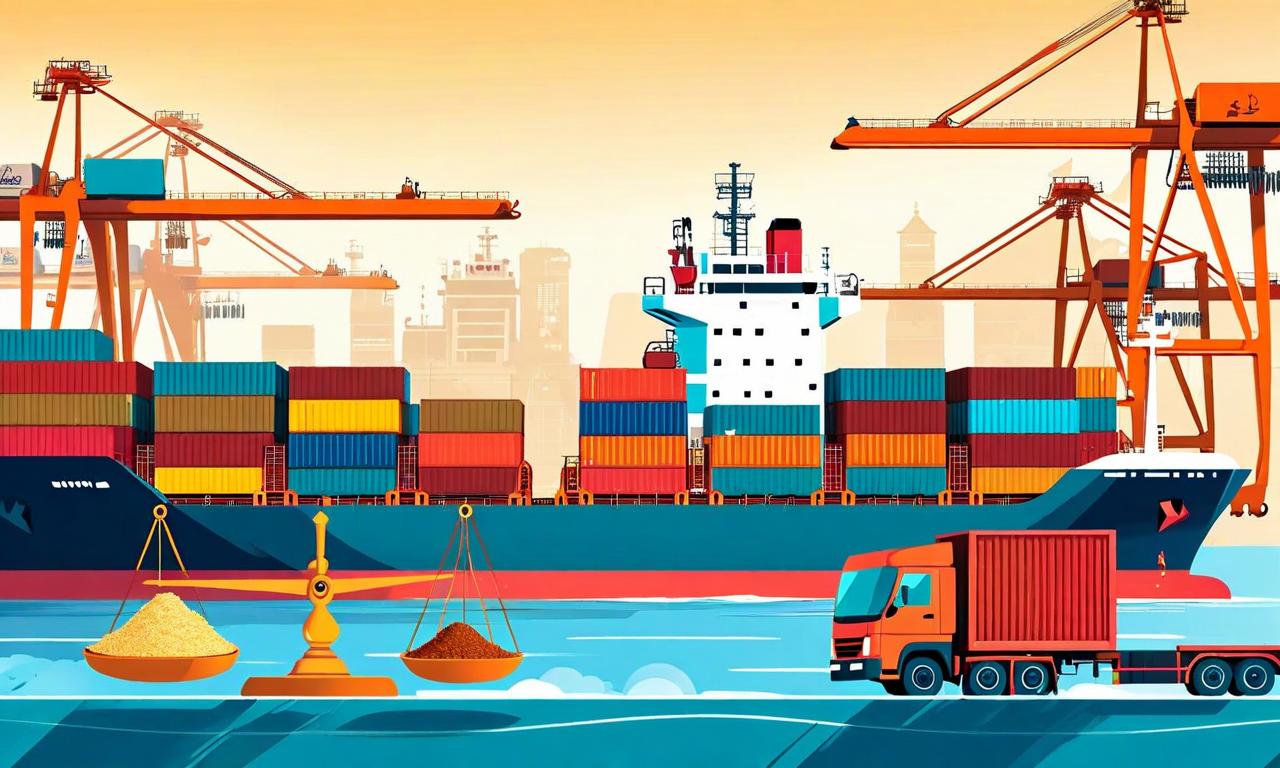Trump Imposes 25% Tariffs on Indian Goods, with Potential to Rise to 50%
President Trump has imposed a 25% tariff on Indian goods, with potential to increase to 50% by August 27 if no trade deal is reached. This aims to address the $45.80 billion US trade deficit with India. The tariffs could impact India's GDP growth by 0.60-0.80 percentage points. Key sectors at risk include textiles, chemicals, and auto ancillaries. India has criticized the tariffs as unfair. The situation is complicated by India's Russian oil imports. HSBC identified five stocks that could potentially outperform: Trent, Infosys, Godrej Consumer Products, State Bank of India, and Phoenix Mills. The tariffs are part of broader measures affecting nearly 70 countries, with Switzerland facing even higher tariffs of 39%.

*this image is generated using AI for illustrative purposes only.
In a significant escalation of trade tensions between the United States and India, President Donald Trump has imposed a 25% tariff on Indian goods, with an additional 25% penalty linked to India's continued purchase of Russian oil. This move, which could see total tariffs reach 50% if no trade deal is reached by August 27, aims to address the $45.80 billion US trade deficit with India.
Impact on Indian Economy and Key Sectors
The imposition of these tariffs threatens to have far-reaching consequences for India's economy. A linear model estimates a potential downside risk of 0.60-0.80 percentage points to India's annual GDP growth. Key sectors facing significant risks include:
- Textiles
- Chemicals
- Auto ancillaries
Companies with direct US export exposure, such as Gokaldas, Aarti, and Sona BLW, are particularly vulnerable to these tariff measures.
India's Response and Potential Oil Import Shifts
India has strongly criticized the tariffs, labeling them as "unfair, unjustified, and unreasonable" while asserting its commitment to protecting national interests. The situation is further complicated by the link between the tariffs and India's oil imports from Russia. If India reduces its Russian crude imports as part of a potential settlement, major players in the oil sector such as Reliance Industries and other Oil Marketing Companies (OMCs) could face significant challenges.
Potential Outperformers Amid Sector Headwinds
Despite the overall negative impact, HSBC has identified five stocks that could potentially outperform in this challenging environment:
- Trent
- Infosys
- Godrej Consumer Products
- State Bank of India
- Phoenix Mills
Investors may want to keep a close eye on these companies as they navigate the turbulent trade landscape.
Global Context and Swiss Parallel
The tariffs on Indian goods are part of a broader set of measures affecting nearly 70 countries. Notably, Switzerland has been hit with even higher tariffs of 39%, prompting companies like Ypsomed to consider relocating production to countries such as Germany to mitigate the impact.
Timeline and Potential for Resolution
The new tariff regime is set to take effect from August 7, with the possibility of escalating to 50% if no trade deal is reached by August 27. This tight timeline puts significant pressure on both US and Indian negotiators to find a mutually acceptable solution.
As the deadline approaches, all eyes will be on the diplomatic efforts between the two nations. The outcome of these negotiations will not only shape the future of US-India trade relations but could also have significant implications for global trade patterns and the broader international economic landscape.

























